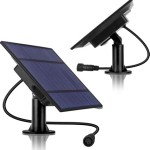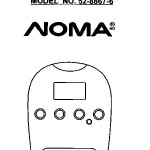How to Remove an Outdoor Electrical Box
Removing an outdoor electrical box is a task that requires meticulous planning, strict adherence to safety protocols, and a comprehensive understanding of electrical systems. While seemingly straightforward, an outdoor electrical box often serves as a critical junction point for various circuits, making its removal a potentially hazardous undertaking if not handled correctly. This article provides a detailed guide on how to safely and effectively remove an outdoor electrical box, emphasizing the importance of de-energizing the circuit, proper wiring practices, and adherence to local electrical codes.
Before commencing any work, it is paramount to acknowledge the inherent risks associated with electrical work. Improper handling of electrical components can lead to severe electric shock, burns, or even death. If there is any uncertainty regarding one's ability to safely perform this task, it is strongly recommended to engage a qualified and licensed electrician. Attempting electrical work without the necessary skills and knowledge can have significant and potentially life-threatening consequences.
Furthermore, local electrical codes and regulations dictate specific requirements for electrical installations and modifications. Failing to comply with these regulations can result in fines, legal repercussions, and potential safety hazards for oneself and others. It is essential to consult with local authorities or a licensed electrician to ensure all work is performed in accordance with applicable codes.
Safety First: De-energizing the Circuit
The most critical step in removing an outdoor electrical box is to completely de-energize the circuit supplying power to the box. This eliminates the risk of electric shock during the removal process. The following steps outline the proper procedure for de-energizing the circuit:
1. Identification: Locate the circuit breaker or fuse that corresponds to the outdoor electrical box. This often requires a process of elimination. If the breaker or fuse is not clearly labeled, it may be necessary to test each breaker or fuse individually. A non-contact voltage tester can be used to verify that the circuit is indeed de-energized after the breaker or fuse is switched off or removed.
2. Shutting Off the Power: Once the correct circuit breaker or fuse has been identified, switch it to the "off" position or remove the fuse. It is crucial to perform this step at the main electrical panel to completely isolate the circuit. Never assume that a circuit is de-energized without verifying it.
3. Verification: Following the switching off of the breaker or the removal of the fuse, use a non-contact voltage tester to confirm that the electrical box and all associated wiring are indeed de-energized. Test all wires within the box to ensure there is no residual voltage present. This step is critical and should not be skipped. This can be done by carefully placing the tip of the voltage tester near each wire without touching it.
4. Lockout/Tagout Procedures: To prevent accidental re-energization of the circuit while work is in progress, implement lockout/tagout procedures. This involves placing a lock on the circuit breaker or fuse box and attaching a tag indicating that the circuit is being worked on and should not be turned on. This is particularly important if others have access to the electrical panel.
5. Double-Check: Even after completing all of the above steps, it is always prudent to double-check with the voltage tester before touching any wires or components within the electrical box. A momentary lapse in concentration or a faulty testing device can lead to serious injury.
It is important to remember that electricity can be unpredictable, and taking these precautionary measures is essential for personal safety. Failure to properly de-energize the circuit is the leading cause of electrical accidents.
Disconnection and Removal
Once the circuit is confirmed to be de-energized, the actual disconnection and removal of the electrical box can begin. This process requires careful attention to detail to ensure that all wiring is properly disconnected and insulated to prevent future hazards.
1. Opening the Electrical Box: Carefully open the electrical box, typically by unscrewing the cover. Be prepared for insects or debris that may have accumulated inside the box. Use appropriate personal protective equipment, such as gloves and eye protection, to avoid contact with any potential contaminants.
2. Documenting Wiring Connections: Before disconnecting any wires, it is crucial to document their connections. This can be done by taking photographs of the wiring configuration or by creating a detailed diagram. Note the color of each wire and its corresponding terminal or connection point. This documentation will be invaluable if the wiring needs to be reconnected later or if the wiring is being rerouted to a new location.
3. Disconnecting the Wires: Using insulated screwdrivers or wire strippers, carefully disconnect the wires from their terminals or connectors. Loosen the screws holding the wires in place, or use the wire strippers to release the wires from push-in connectors. Ensure that each wire is completely disconnected from the box.
4. Insulating Wire Ends: After disconnecting the wires, immediately cap each wire end with an appropriately sized wire connector (wire nut). This will prevent accidental contact with the bare wires and prevent short circuits. Ensure the wire connectors are securely fastened to the wire ends.
5. Removing the Electrical Box: Once all the wires have been disconnected and insulated, the electrical box can be physically removed. This may involve unscrewing the box from its mounting surface or detaching it from any conduit or other supporting structures. Use appropriate tools, such as screwdrivers or pliers, to remove any fasteners holding the box in place.
6. Securing Conduit and Wiring: If the electrical box was connected to conduit, ensure that the conduit is properly secured and protected after the box is removed. If the wires run through the conduit, ensure the conduit opening is sealed to prevent water or debris from entering. The exposed wires within the conduit at the opening, should be capped with appropriate sized wire connectors (wire nut).
7. Fill the hole: Fill the mounting hole, so insects, water and debris cannot get in. Seal the weather tight hole.
It is essential to work methodically and carefully throughout this process, ensuring that each wire is properly disconnected, insulated, and secured. Avoid pulling or yanking on wires, as this can damage the insulation or cause them to become disconnected further down the line.
Post-Removal Procedures and Best Practices
After the electrical box has been successfully removed, certain post-removal procedures and best practices should be followed to ensure the safety and integrity of the electrical system.
1. Inspecting Wiring: Carefully inspect all the exposed wiring for any signs of damage, such as frayed insulation, corrosion, or loose connections. If any damage is found, the wires should be replaced or repaired by a qualified electrician. Damaged wiring can pose a significant safety hazard and should be addressed promptly.
2. Sealing Openings: Any openings left by the removal of the electrical box should be properly sealed to prevent water, insects, or debris from entering the building. Use weather-resistant sealant or other appropriate materials to close up any gaps or holes. Sealing openings helps to protect the electrical system from environmental damage and prevents potential safety hazards.
3. Disposing of the Electrical Box: Dispose of the removed electrical box in accordance with local regulations. Some materials, such as metal, may be recyclable. Check with local recycling centers for proper disposal guidelines.
4. Record Keeping: Keep a record of the work performed, including the date of removal, the wiring configuration before disconnection, and any repairs or modifications made to the electrical system. This documentation can be helpful for future maintenance or repairs.
5. Future Considerations: Consider the long-term implications of removing the electrical box. If the box was providing power to other devices or circuits, it may be necessary to install a new electrical box at a different location or to reroute the wiring to accommodate the changes. Plan any future electrical work carefully to ensure that it is performed safely and in compliance with all applicable codes.
6. Professional Inspection: After completing the removal and any associated wiring modifications, it is highly recommended to have a qualified electrician inspect the work to ensure that it has been performed correctly and safely. An electrician can identify any potential problems and make necessary corrections to prevent future hazards.
Removing an outdoor electrical box can be a complex and potentially dangerous task. By following these detailed instructions and prioritizing safety, it is possible to complete the job safely and effectively. However, if there is any doubt about one's ability to perform the work safely, it is always best to consult with a qualified and licensed electrician.

Saving Money With Diy How To Replace An Outdoor Cover The Checkout Presented By Ben S Bargains

Saving Money With Diy How To Replace An Outdoor Cover The Checkout Presented By Ben S Bargains

Saving Money With Diy How To Replace An Outdoor Cover The Checkout Presented By Ben S Bargains

Saving Money With Diy How To Replace An Outdoor Cover The Checkout Presented By Ben S Bargains

How To Install An Outdoor The Home Depot

How To Install An Exterior Electrical

How To Add An Outdoor Electrical Diy

Replace Outdoor Electrical Plug And Cover

Home Improvement How To Remove Replace Outdoor Light Fixtures Porch Driveway Etc Outside
How To Seal An Outdoor Electrical Box Quora
Related Posts







